The Desert is for Wildlife not "Green" Energy Development
Tortoises not solar panels, Birds not wind farms, Flowers not lithium mines
This post is a pitch for my website, Wildflowers of Joshua Tree Country, an online botanical guide for the Mojave Desert featuring my photography. It’s a totally non-monetized project, just for enjoyment and education.
The desert is a misunderstood place in western culture. Because we are an agriculturally-based civilization, we judge land on how appropriate it is for farming, and since the desert is usually considered "useless” that way, we think of it as “lifeless.”
This perspective has a long history. An “eremologist” is one who studies deserts, and the word is derived from the Greek eremos—ἐρημία—which means both “desert” and “lonely.” As detailed by photographer and amateur botanist, Michael L. Charters, at his website, “California Plant Names: Latin and Greek Meanings and Derivations,” forms of eremos signify:
“a lonely place, a place of solitude, a deserted place, solitary, uninhabited" and by extension "of the desert" since a desert is a lonely place that is largely uninhabited.
Uninhabited by agriculturally-civilized humans, that is. But not uninhabited altogether.
When asked to think of a desert, people might picture the dunes of the Sahara, apparently devoid of living things, but deserts take many other forms. Much of the Mojave Desert in the southwestern US is more gravelly and rocky than sandy, and dunes make up only a very small part of its geography, which features mountains, basins, open woodlands, watercourses and even a few wetlands. The word “Mojave” comes from Hamakhaave in the Mojave Tribe’s language and means “beside the water.” Their name for themselves, Pipa Aha Macav, “The People By The River,” refers to the Colorado River, which flows on the eastern side of the Mojave Desert, and where the Fort Mojave Reservation is located today.
The Mojave Desert is full of plant and animal life, some of it found nowhere else on earth. The area hosts approximately 1,500 taxa of plants, making it one of the densest hotspots of biodiversity in California, the state where most of it is located. It is far from “lifeless.” This high level of biodiversity is due in part to the special adaptations made by plants to survive in this unique environment, but also because the area has suffered less development than other places. California’s Central Valley, for example, was once made up of vast wetlands, slow-moving braided streams, and riverine woodland, but was drained and domesticated for agriculture. The enormous hit suffered by wildlife there is difficult to estimate, given the few records we have about its baseline upon European arrival, but it was catastrophic AF.
Unfortunately for the denizens of the amazing Mojave, its sunny conditions, cheap real estate value and low human population density make it an ideal place to site large-scale solar infrastructure. The fact that much of the land is publicly-owned avoids the need for the politically thorny practice of eminent domain.
But the footprints of these solar developments completely wipe out the pre-existing habitat. The areas need to be cleared and graded for construction, and then maintained in a condition where plant life won’t interfere with operation. With these activities, not only is all plant life initially destroyed, but with it the food sources and homes of innumerable insects, birds and animals, including endangered species like the Desert Tortoise. See some before and after pictures of a solar development at the Basin & Range website.
There’s something so incredibly tragic about the fact that a place like the Mojave Desert—or the Sonoran, or the Great Basin—was able to squeak through the worst of civilization’s destructive maw so far, but is now under the gun, and that environmentalists are cheering for it. In the case of “green energy,” it’s utterly despicable that unadulterated rape and pillage is not recognized for what it is because of a politicized media narrative that has misled so many well-meaning people.
For a number of years in the mid 2010s, I spent a portion of my winters camping in the Mojave Desert. I was blessed to experience two different superblooms during that period, including one in Death Valley. I took thousands of photographs, which those who followed me on social media back then might remember.
During that time, I also put together a botanical guide of what I had seen, and made it available as an e-book called, “Wildflowers of Joshua Tree Country.” But the e-book never sold well so a couple winters ago, after updating it with new entries and more photos,I uploaded it as a website, free for everyone to enjoy.
As a botanical guide the website contains over 200 plant profiles with botanical name, common names, family, etc., plus translations of the Latin names, Native American uses and animal associations. You can browse entries by family, flower color, and life cycle (annual herb, tree, cactus, etc.) All the photos are my own.
My goal is to help people see that the desert is not lifeless or lonely, but is indeed brimming with life, life that deserves to keep living. I further intend that people will be inspired to oppose further human development in the desert, even if it’s for “green energy.” I also hope that people will share it when the subject comes up. Or just with people who appreciate pictures of pretty flowers.
Check it out here: Wildflowers of Joshua Tree Country
Sample pages:





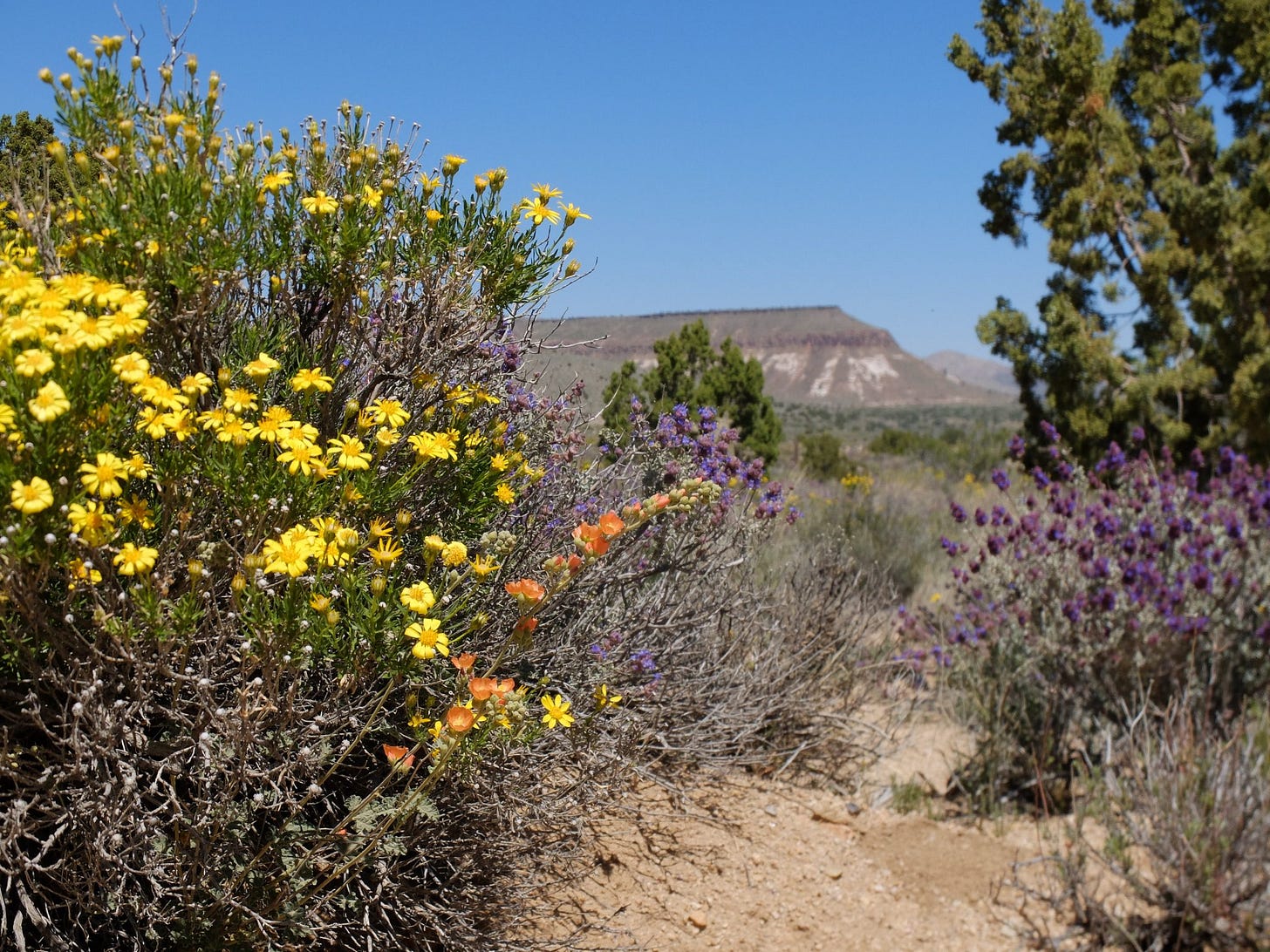
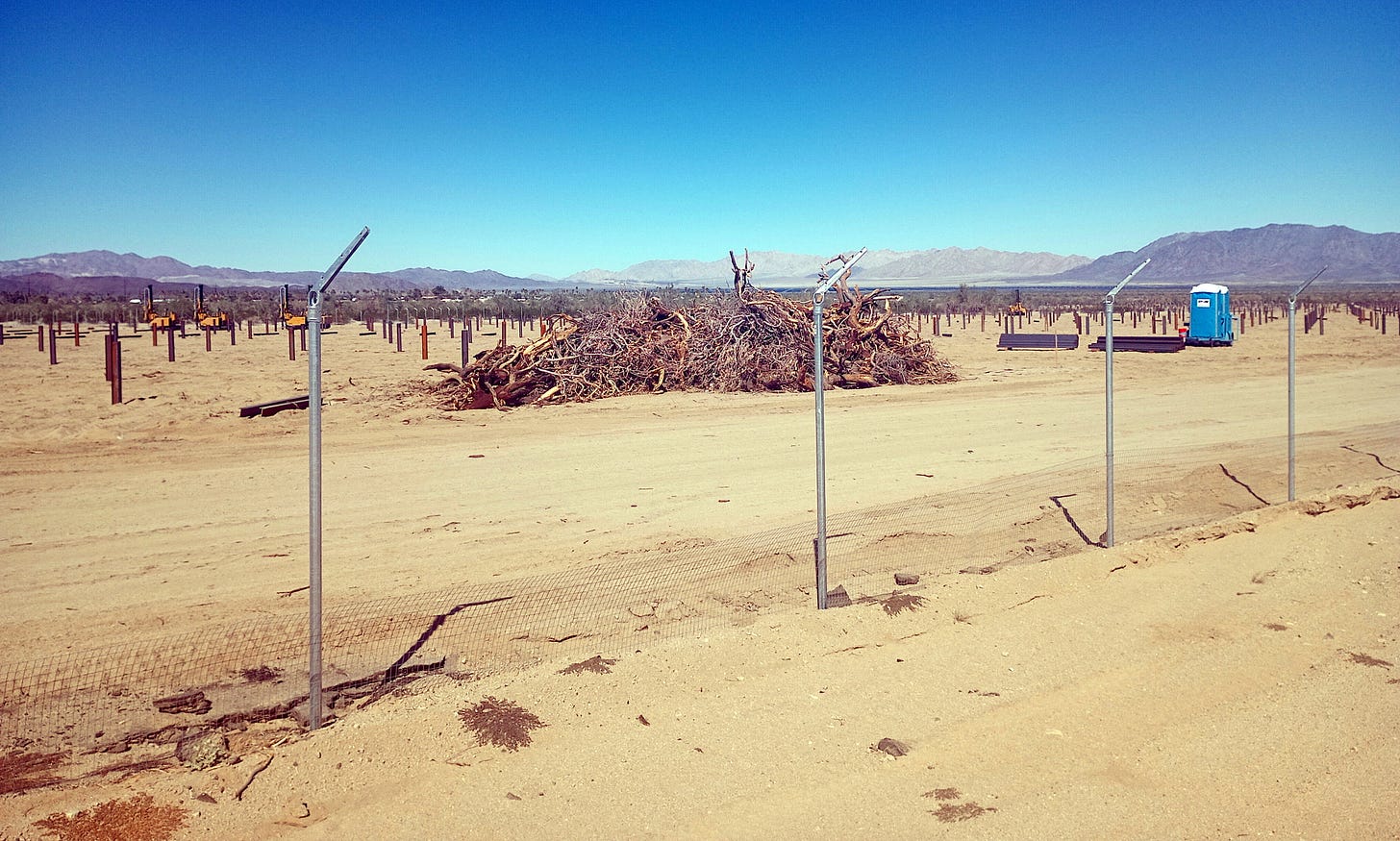
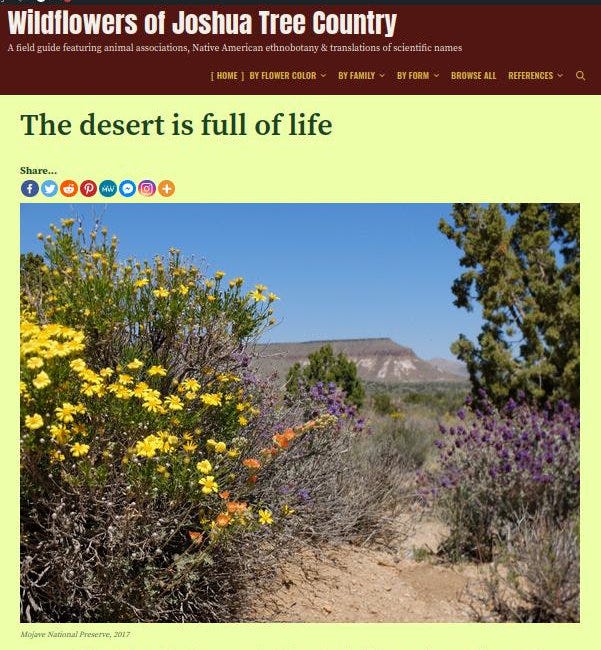
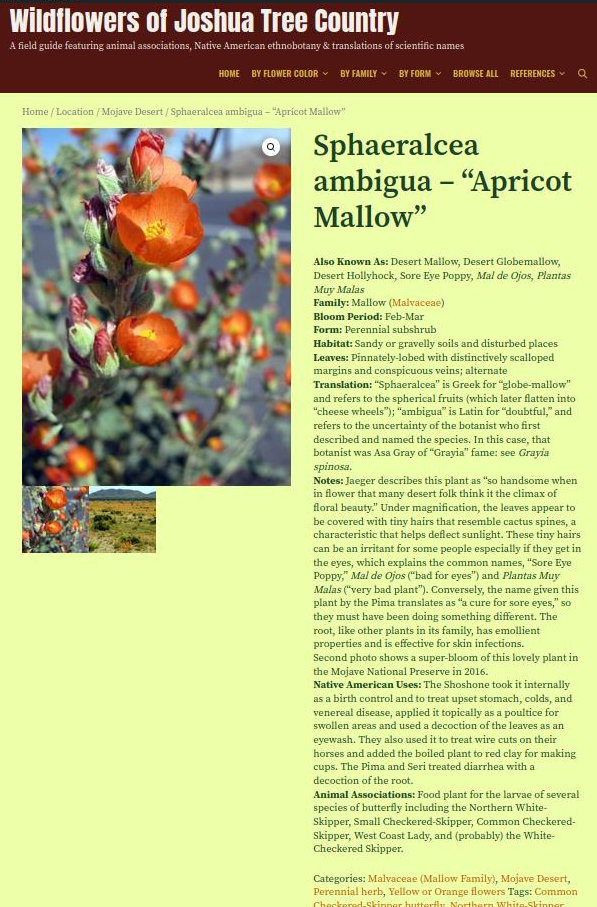
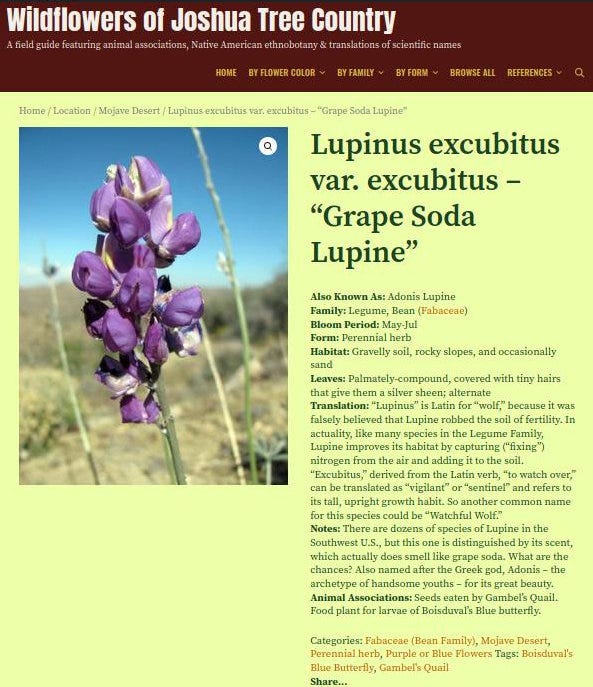
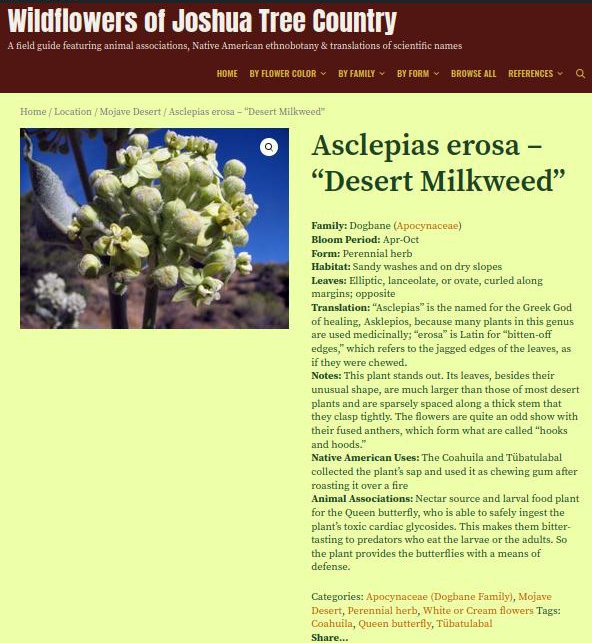
The vulgarity of replacing ecosystems to "save the planet" is sickening. The planet doesn't need human energy infrastructure so humans can continue mindlessly wasting energy and resources, it needs ecosystems and humans to live within natural limits, not to look for more ways to push past them.
I was just reading an article by Bill McKibbon a day or two ago where he was so excited about the fact that so much alternative energy ie. solar and wind farms are being built. All I could think about were the birds dying as they fly above them and all the rest of the plants and animals on the ground, getting wiped out so “we” could have more energy. Truly sickening.